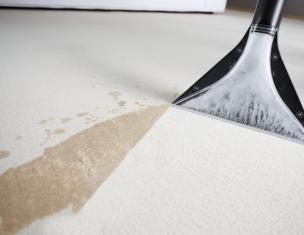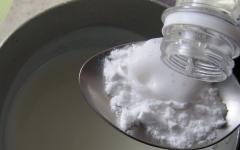Finishing the construction of a house, its owner often has to choose materials for finishing the facade. Moreover, it must solve two problems at once: improve the appearance and increase thermal insulation. Owners of old buildings also face the need to update the facade. The façade cladding loses its attractiveness over time, and it needs to be modernized in line with modern technologies. In both cases, you can cope with all the problems by installing siding with insulation with your own hands.
This material allows you to quickly return the facade to a presentable appearance, to make it modern and practical. The presence of a layer of insulation will improve the thermal insulation of the house, help to significantly save on heating bills.
Siding is well known to consumers. It has proven to be an easy-to-use material, the sheathing technology of which is quite accessible for do-it-yourself work. Its advantages for facade decoration:
- durable;
- has a presentable appearance;
- easily copes with temperature changes;
- not damaged by insects;
- easy to install;
- does not require complex care.
There are different types of siding depending on the material from which it is made: vinyl, wood, metal, fiber cement. When choosing, it is necessary to take into account the specific operating conditions. Before buying the material, you should inspect the panels, checking the uniformity of coloring, the presence and quality of holes for fastening. The canvas should not have differences in thickness. The front surface should be matte, without cracks and peeling.
Installation of siding with insulation is carried out in several stages, including installation of the frame, laying insulation and installation of panels. Before warming, preparatory work will be required.
Wall preparation
Work can be carried out at any time of the year, but it is better to start them at a positive air temperature. This is especially true for the installation of vinyl sheets. At low temperatures, vinyl becomes brittle and brittle.

It is necessary to carefully examine the condition of the walls of the house, check for the absence of rotten boards, peeling plaster or other damage. It is also required to remove elements that will interfere with further work: drainpipes, lanterns, moldings, window sills, ebbs. The façade must be freely accessible.
The walls of the house with a stiff brush are cleaned of dust and dirt. Under siding, it is not necessary to carefully level the walls, but it is recommended to eliminate visible defects. The cleaned walls are first covered with soil. After the primer dries, the damage is repaired: small ones are filled with sealant, large ones are covered with tow and sealed. Correctly executed facing will hide roughnesses.
Then a crate is arranged on the walls. For it, metal or wooden slats are used. The tree must be pre-treated with antiseptics, it is better to use coniferous wood. The metal crate is made from profiles that are usually used for the installation of drywall. Their galvanized surface is resistant to corrosion.
The number of profiles is calculated based on the installation step. Usually it should not exceed 40-60 cm. The crate will be carried out in two stages. The first is for insulation, the second is for siding. The first layer of bars is placed horizontally, and the second - vertically. When fixing the frame, the following rules are taken into account:
- for fastening each panel there must be at least two bars of the crate;
- the edge of the canvas should clearly lie on the bar;
- it is necessary to constantly control the verticality of the resulting plane.

Failure to follow these simple rules when installing with your own hands will lead to uneven skin, the appearance of wave-like deviations. The space between the cladding and the wall of the house is filled with insulation.
Selection and installation of insulation
To insulate the facade, you can use different materials that differ in characteristics and method of installation:
- Roll materials. They are available in thicknesses of 3-20 mm. They are attached to the wall with glue. Used in mild climates.
- Plates (mats) from mineral fibers. They have different stiffness, excellent sound-proofing properties, low thermal conductivity, do not let moisture through.
- Styrofoam. It is produced in the form of plates of different thicknesses with a porous structure. Holds heat well. The material is very easy to install, so it is often used when doing do-it-yourself work.

The choice of insulation depends on the climatic features of the location of the house, the material of the walls, financial capabilities, and the required degree of insulation. Convenient for sheathing are materials in the form of plates. They keep their shape well, keeping it during further use.
The order of laying the insulation with your own hands:
- Vapor barrier device. It is needed to protect the insulation from getting wet due to condensation between the layers. For vapor barrier, roofing material, polyethylene or membrane film is used, laying and fixing it on the prepared wall before insulation.
- Laying insulation boards between the batten guides. Separate elements should be located tightly, without gaps, cracks. Each element is fixed with special dish-shaped dowels.
- Installation of waterproofing. This layer should protect the insulation from precipitation. It is laid on top so that it overlaps on the adjacent area, fixed to the crate with construction brackets.
After that, the second layer of the crate is mounted. It serves as the basis for siding, provides a ventilation gap.
Siding installation
The facade cladding continues onto the finished crate, the slats of which are placed vertically. The walls of the house are ready for. Installation begins with the installation of corner strips. Before that, it is recommended to make markings that will help you navigate and not violate the geometry of the walls. Along the marked lines along the perimeter of the house, along the openings and at the corners, the planks are fixed with self-tapping screws.

If everything is done correctly, then further installation of siding with your own hands will not cause difficulties. Installation starts from the bottom row. Before this, the bottom line is determined, outlining it around the entire perimeter. The starting strip should be located exactly along the intended line with the upper edge.
Further sheathing technology is simple: the bar is inserted into the starting profile, and self-tapping screws are screwed into the holes on the upper edge. It should be noted that the fastening should not be rigid. The self-tapping screw should be perpendicular to the wall, exactly in the middle of the hole, it should not be tightened tightly. A small gap should also be provided in the side rails.
When heated, the canvas expands and when rigidly fastened, it can bend. To cut the bar to the desired size, use metal scissors, a jigsaw, an electric saw. Start cutting from the top of the edge with holes. Do not allow chips of the coating, the appearance of cracks.
The connection between the individual slats is carried out by a special lock fastening. A small click indicates its secure fixation. The installation is completed by installing finishing strips, finishing openings, gables.









